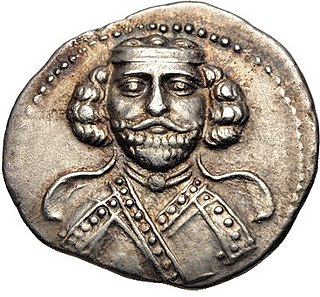Adiabene | |||||||||||
|---|---|---|---|---|---|---|---|---|---|---|---|
| c. 164 BC–c. 379 AD | |||||||||||
 The Kingdom of Adiabene in c. 37 AD at its greatest extent, during the reign of Izates II | |||||||||||
| Status | Vassal of the Parthian Empire (145 BC – 224 AD) Vassal of the Sasanian Empire (224–379) | ||||||||||
| Capital | Arbela | ||||||||||
| Common languages | Classical Syriac | ||||||||||
| Religion | Ashurism, Judaism, Zoroastrianism, Christianity, Manichaeism | ||||||||||
| Government | Monarchy | ||||||||||
| King | |||||||||||
• around 15 CE | Izates I | ||||||||||
• 20s? – c. 36 [1] | Monobaz I | ||||||||||
• c. 36 – c. 55/59 AD | Izates II [2] | ||||||||||
| Monobaz II | |||||||||||
• ? – 116 | Meharaspes | ||||||||||
| Historical era | Antiquity | ||||||||||
• Established | c. 164 BC | ||||||||||
• Transformed into a Sasanian province | c. 379 AD | ||||||||||
| |||||||||||
| Today part of | Iraq Turkey | ||||||||||
Adiabene (Greek: Αδιαβηνή) (Classical Syriac : ܚܕܝܐܒ) was an ancient kingdom in northern Mesopotamia, corresponding to the northwestern part of ancient Assyria. [3] The size of the kingdom varied over time; initially encompassing an area between the Zab Rivers, it eventually gained control of Nineveh and starting at least with the rule of Monobazos I (late 1st-century BCE), Gordyene became an Adiabenian dependency. [4] It reached its zenith under Izates II, who was granted the district of Nisibis by the Parthian king Artabanus II (r. 12–40) as a reward for helping him regain his throne. [5] [6] Adiabene's eastern borders stopped at the Zagros Mountains, adjacent to the region of Media. [7] Arbela served as the capital of Adiabene. [8]
Contents
- Etymology
- Location
- Population
- History
- Achaemenid Persian Empire
- Queen Helena's conversion to Judaism
- Hellenistic period
- Parthian Empire
- Sasanian rule
- Bishops
- See also
- Notes
- References
- Sources
- External links
The formation of the kingdom is obscure. The first instance of a recorded Adiabenian ruler is in 69 BCE, when an unnamed king of Adiabene participated in the battle of Tigranocerta as an ally of the Armenian king Tigranes the Great (r. 95–55 BCE). [9] However, coinage implies the establishment of a kingdom in Adiabene around 164 BCE, following the disintegration of Greek Seleucid rule in the Near East. [10] [11] Adiabene was conquered by the Parthian king Mithridates I (r. 171–132 BCE) in c. 145–141 BCE, and by at least from the reign of Mithridates II (r. 124–91 BCE) served as an integral part of the Parthian realm. [12]
Adiabenian rulers converted to Judaism from paganism in the 1st century CE. [13] Queen Helena of Adiabene (known in Jewish sources as Heleni HaMalka, meaning Helene the Queen) moved to Jerusalem, where she built palaces for herself and her sons, Izates bar Monobaz and Monobaz II at the northern part of the city of David, south of the Temple Mount, and aided the Jews in their war with Rome. [14] According to the Talmud, both Helena and Monobaz donated large funds for the Temple of Jerusalem. After 115 CE, there are no historic traces of Jewish royalty in Adiabene.
The Parthians were overthrown by the Sasanian Empire in 224, who by the time of Shapur I (r. 240–270) had established their rule in Adiabene. [5] Ardashir II is the last figure to be recorded as king of Adiabene, which implies that the kingdom was after his tenure in c. 379 transformed into a province (shahr), governed by a non-royal delegate ( marzban or shahrab ) of the Sasanian king. [15]















